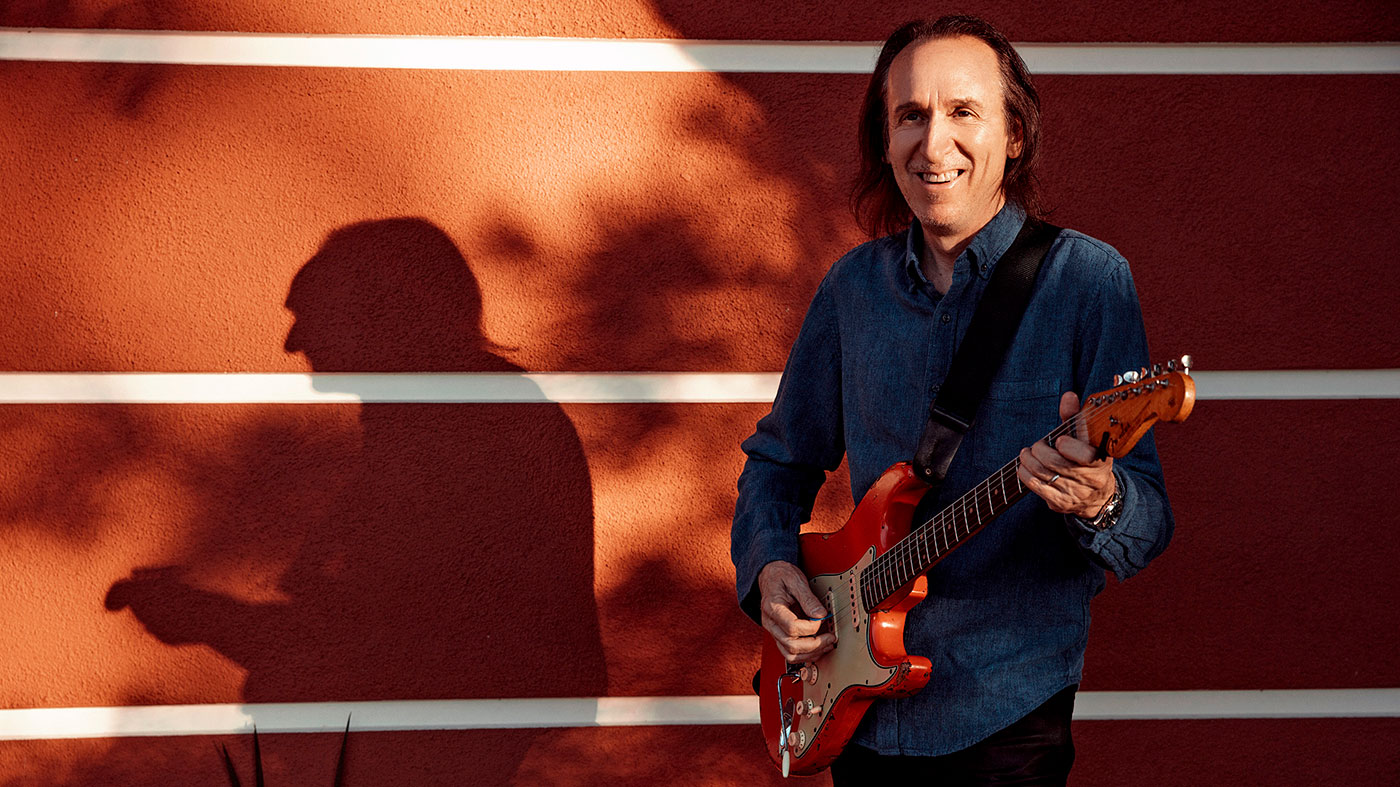"If you roll your guitar volume back and have a pedal on, it’ll buffer it and you’ll still have the high end" – Michael Landau talks Strats and shares his top 5 tips for guitarists
We discuss tone and the 'Coma' Strat with a session giant
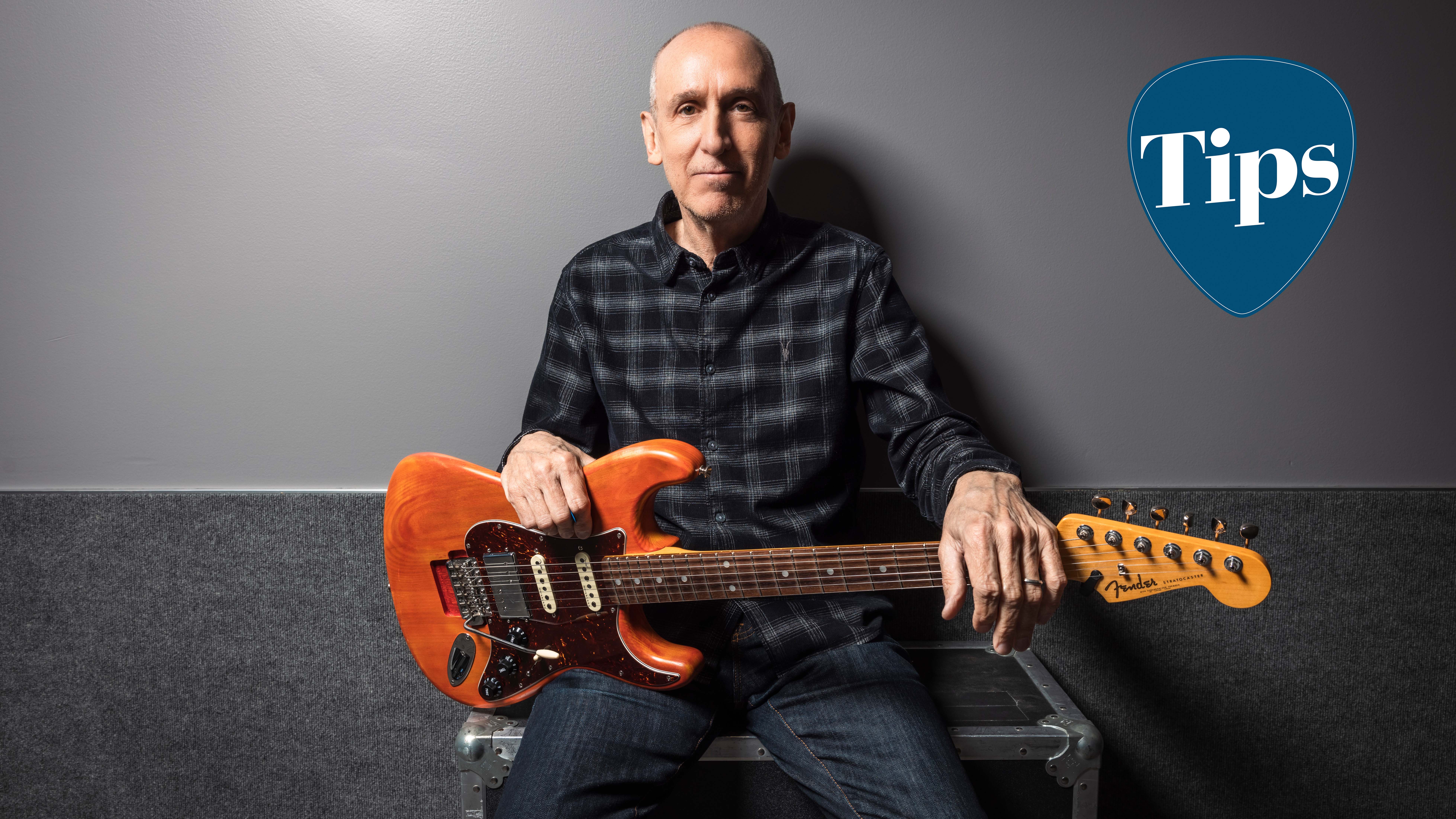
Recently, we reported on the release of the Fender Stories Collection Michael Landau 'Coma' Stratocaster – a signature guitar designed to pay homage to the world renowned session ace’s lifelong sidekick: a ‘59 Stratocaster that he purchased secondhand, and already lightly modded, when he was just 16.
Back then, the guitar already possessed a unique look, thanks to its previous owner having stripped back a Dakota Red finish to reveal the alder body beneath. They’d also replaced the stock pickups with alternatives.
These deviations from factory settings granted Landau all the licence he needed to put his own mark on the instrument - which he’s done with relish over the course of almost half a century.
Christened for life by having the word 'COMA' scrawled on in permanent marker (a nickname its owner had originally intended for himself), the instantly recognisable Strat would go on to become Landau’s main session guitar for decades - undergoing many intriguing modifications to suit his ever-changing tastes and needs along the way.
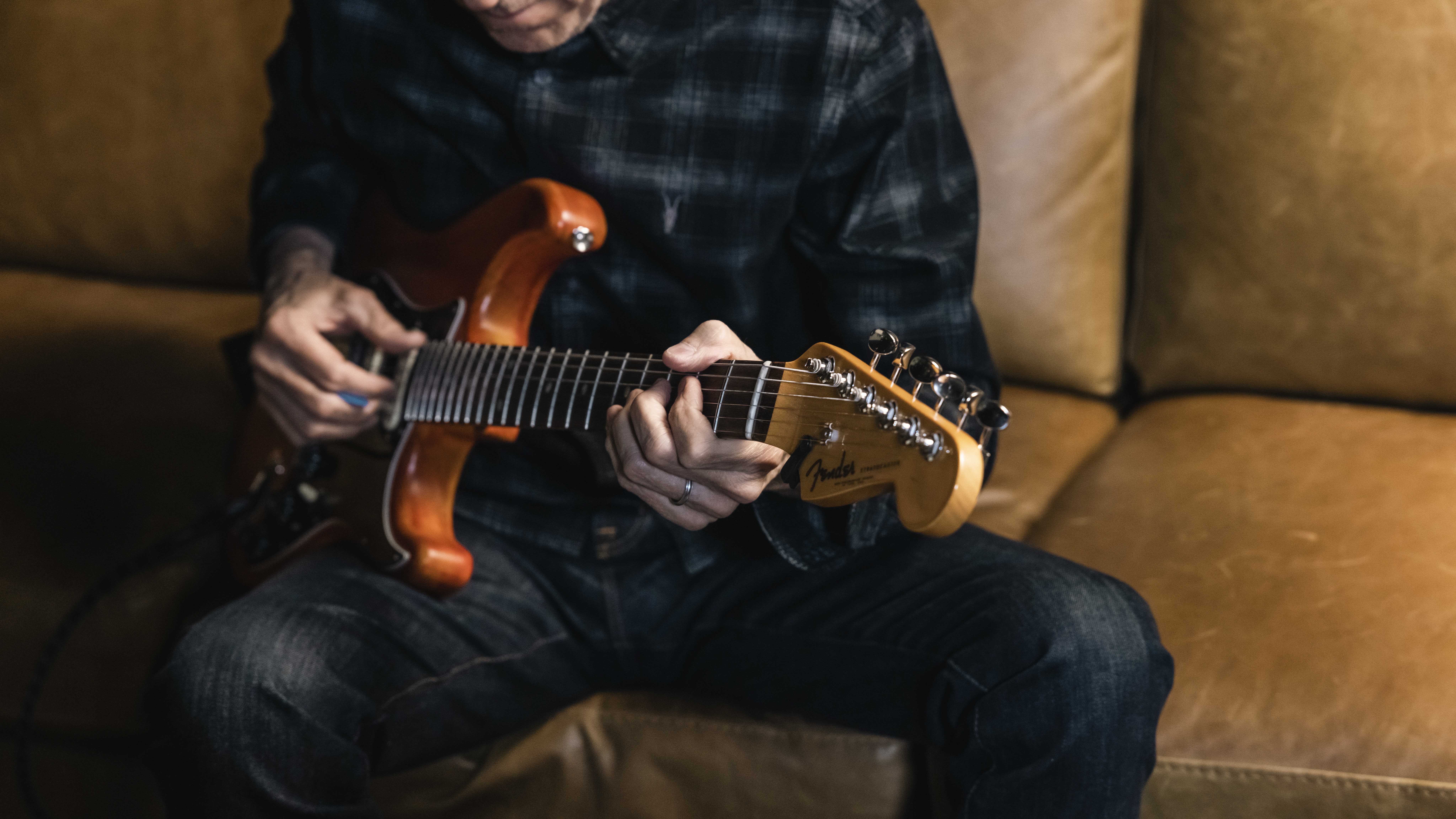
Pickups got swapped in and out. Necks changed. He installed and then later uninstalled an on-board boost circuit, and - if you’re a vintage guitar purist, you might want to look away now - he routed out space in the body to accommodate a Floyd Rose vibrato unit. In his defence, it was the ‘80s, Eddie Van Halen did it first, and the concept of 'vintage guitars' wasn’t as much of a big deal back then as it is now.
Nowadays, the Rose is long gone, but the open cavity remains, giving the guitar a semi-hollow resonance akin to a Thinline.
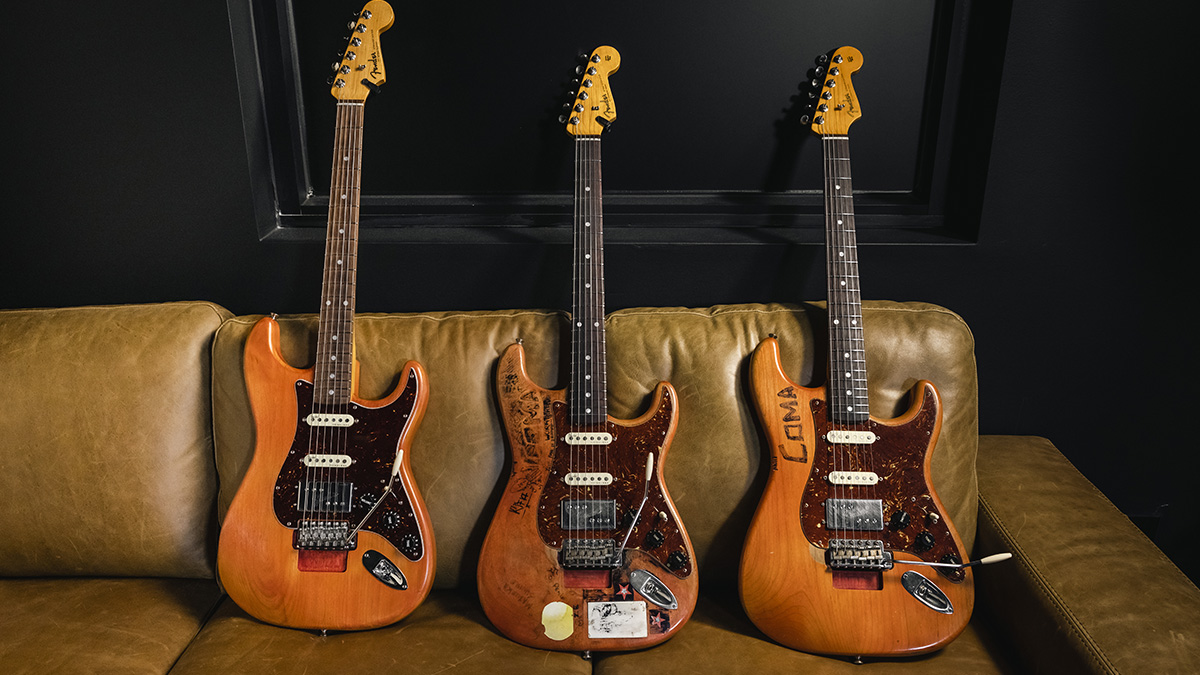
You’ll have heard the guitar - quite possibly one of the most recorded Strats in history - on albums by the likes of Joni Mitchell, Michael Jackson, Miles Davis, Pink Floyd, James Taylor, B.B. King, and literally hundreds more.
Get the MusicRadar Newsletter
Want all the hottest music and gear news, reviews, deals, features and more, direct to your inbox? Sign up here.
Now, you can benefit from Landau’s years of experimentation and spec refinement and experience the sound and feel of the legendary 'Coma' Strat for yourself.
As well as the US-made Stories Collection model, which will set you back a tidy £2,659 / $2,799, a hyper-limited edition Fender Custom Shop replica is also available on a made-to-order basis for the somewhat weightier sum of $15,000.
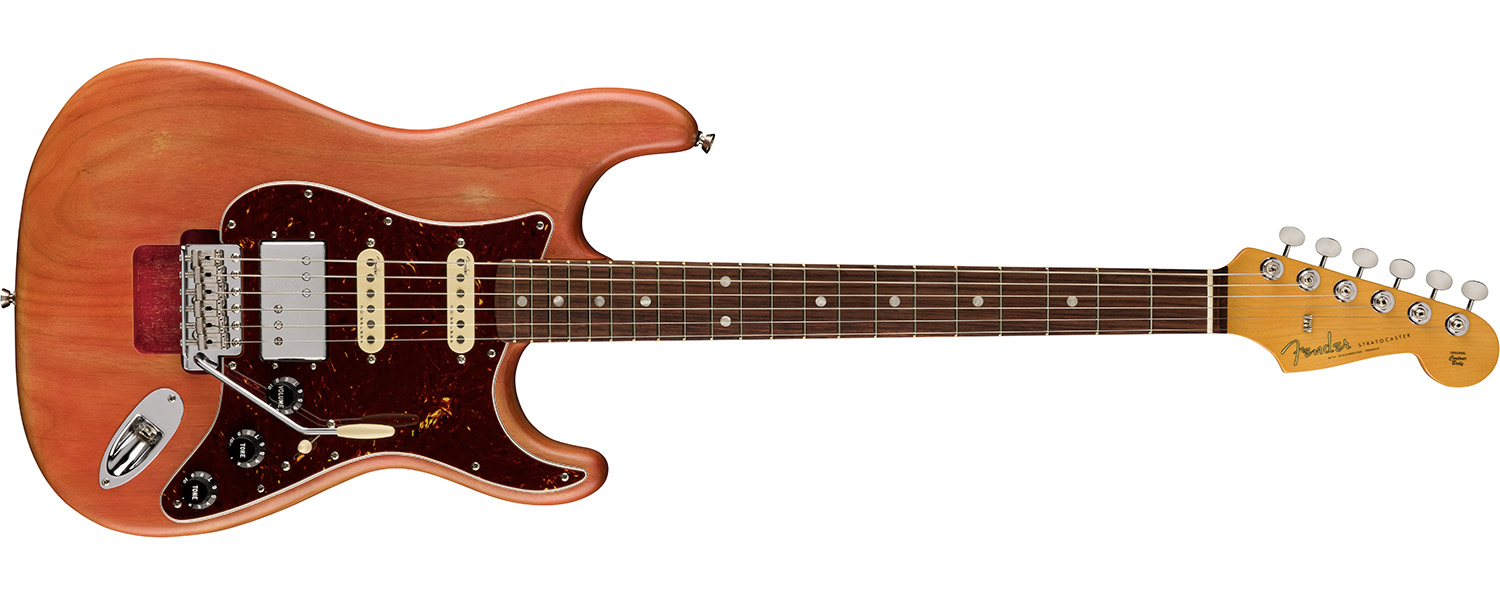
Capturing in microscopic detail the wear from years of use in studios and on stages across the world - as well as the instrument’s history of mods and mod reversals - Custom Shop Masterbuilder Todd Krause will captain each painstakingly detailed build, with Landau on hand to provide custom detailing, too.
Crucially, both the Custom Shop and Stories Collection versions represent the guitar as it exists now: with an HSS pickup configuration, a ‘60s-style "C" shaped maple neck, a rosewood fingerboard, and - of course - that red-stained alder body.
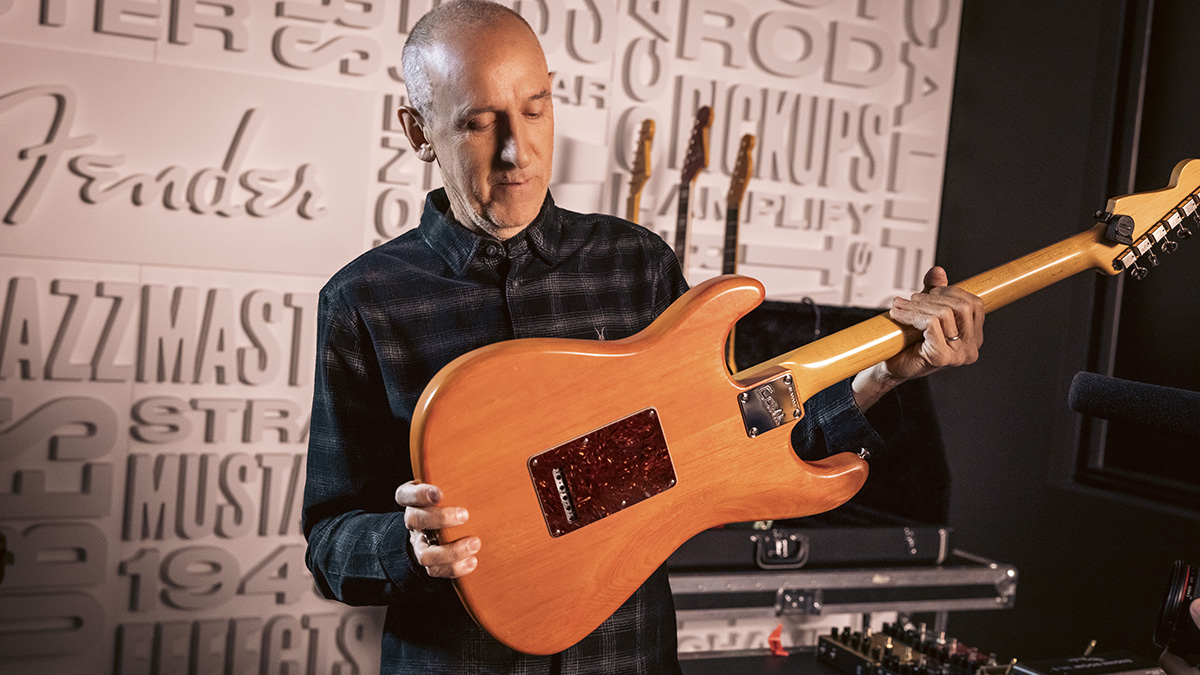
You’ll find a custom Landau Cunife Wide-Range Humbucker in the bridge and Michael Landau Ultra Noiseless single-coil Strat pickups in the neck and middle positions. According to the man himself, both factory and handbuilt iterations offer “the perfect balance of everything sonically.”
Speaking from his home in Los Angeles, we caught up with Michael to find out more about the original, the Stories Collection and Custom Shop 'Coma' Strats, before mining him for five pearls of guitar wisdom to keep in mind next time you’re playing, practicing or thinking of taking a router to that precious axe…
A ‘59 Strat in 1974 wasn’t that much money
First of all, let’s talk a little bit about the original guitar that these new signature instruments are modelled from. What was it about that ‘59 Strat that captured your imagination when you stumbled across it all those years ago?
"Well, it was used when I bought it. It was 1974, so it was already a used guitar and that’s all I could really afford back then. Someone had stripped the finish off. I looked like, I guess, that someone was a John Lennon fan or something and they liked a natural wood finish. I loved it and it looked great."Once I picked it up, it was super light and that was one of the main things that was really nice about it. And I liked maple necks back at the time, and it was a great neck - a little bit small, but I liked it. It sounded really good too!
"Back then, they weren’t that much. A ‘59 Strat in 1974 wasn’t that much money."
And the previous owner had already started to make modifications to it, hadn’t they?
"Yeah, the price was even lower because of that, and I just used it as a kind of Frankenstein guitar to do whatever I wanted to over the years. It worked out!"
Given that it’s been your sidekick for every step of your rather remarkable career, do you think it’s conceivably possible that, had you not happened upon that guitar at 16 years old, your playing journey might have taken a different direction?
"Oh, interesting! I have never thought of that, but I suppose so. I think, mainly, the timing of when I started doing studio work was really perfect timing – a perfect storm, I guess you could call it – because I grew up with Steve Lukather. Once he started doing Toto, he just stopped doing sessions, so he and Jeff Porcaro would recommend me, and that just kind of snowballed.
"So, it was really a good time to start doing studio work. At that time, Lukather and I were kind of the young kids that had all these crazy new effects – this rack that everyone was using. We kind of pioneered that little rack scene back then, so it was a good transition from the guys before me who were great, like Dean Parks – Dean Parks still works – but Larry Carlton and all those guys. They weren’t using the really processed guitar sounds, so that helped as well.
"But as far as the Strat, the thing back in the ‘80s was to mod your guitar. Everyone was doing it, so I was into it!"
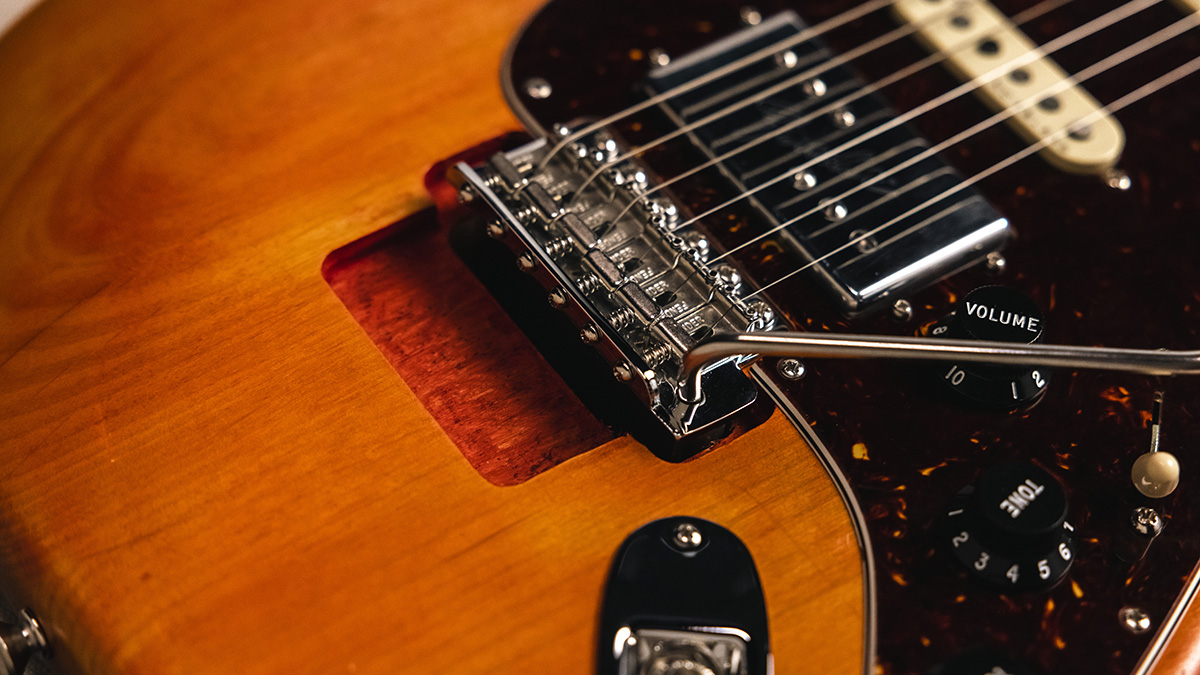
I was a huge Van Halen fan and had to have a Floyd Rose
Do you recall what your first mod was and what inspired you to do it?
"The first one was, I think, putting the Floyd Rose bridge on. I was a huge Van Halen fan and I had to have it. I was doing a lot of tremolo bar stuff. Back then, it was very popular.
"I think that was the first major mod, and the second was putting the mid boost in, which was almost like having a pedal built into your guitar."
Neither of those things are there on the instrument in its current form - or on the new Fender signature models - but the routing is still there, which is quite important, isn’t it?
It is! I mean, we did it for two reasons. It just has a sonic thing with that hollowness around the bridge back there that just makes it almost like a Thinline guitar.
It’s just got this hollow, beautiful tone to the body, and also, when you pull up on the tremolo, it doesn’t bottom out on the body. So, you can pull back a little bit further without having to set it up like Jeff Beck - who used to tilt it way forward in order to pull back.
"It kind of serves a couple of different purposes to still have the route there, and I think it looks cool."
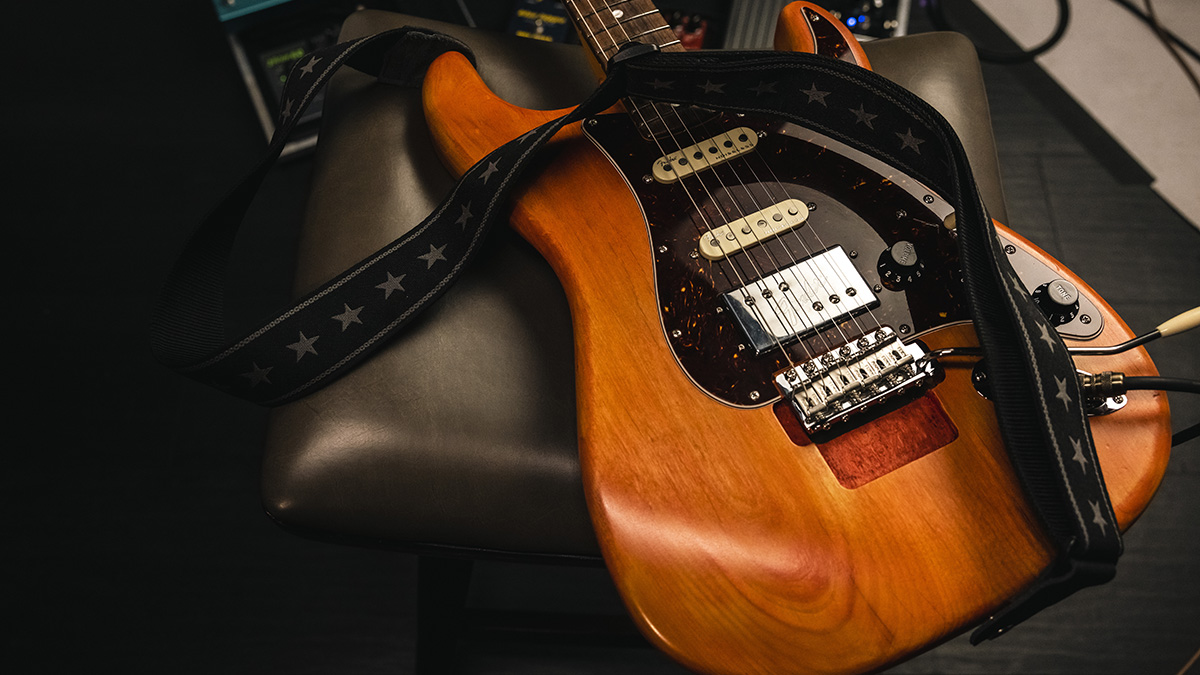
I’m really glad we did it because it’s such a great guitar
Seeing a ‘59 Strat with a big chunk drilled out of it might make a lot of vintage guitar fans wince, but you’ve suggested that back when you bought it, the concept of vintage guitars didn’t exist in quite the same way as it does today…
"Exactly, and the whole thing with this collection is that it’s called The Stories Collection. My friend Joey Brasler started it. I was always a little bit hesitant to do another signature guitar because there can be a lot of baggage that comes with doing it, but this guitar just fits that series so well. I’m really glad we did it because it’s such a great guitar, the Corona shop model."
There are two new Coma signature guitars - one of which is a little more wallet-friendly than the other. Could you talk us through the idea behind working with Fender on the two variations and what the key differences are between the Stories Collection model and the Custom Shop instrument?
"Yes, the Custom Shop one will be relic’d. I mean, that one is going to be really true to the original, and I’m going to actually be drawing the ‘Coma’ on all of those. It’s cool, and that one will be a recreation of the real Coma Strat. It’s funny to say the word ‘coma’ over and over!
"But, the production model - the regular model - won’t be relic’d, and that will just have all the same specs as the original. The Custom Shop ones are real replicas."
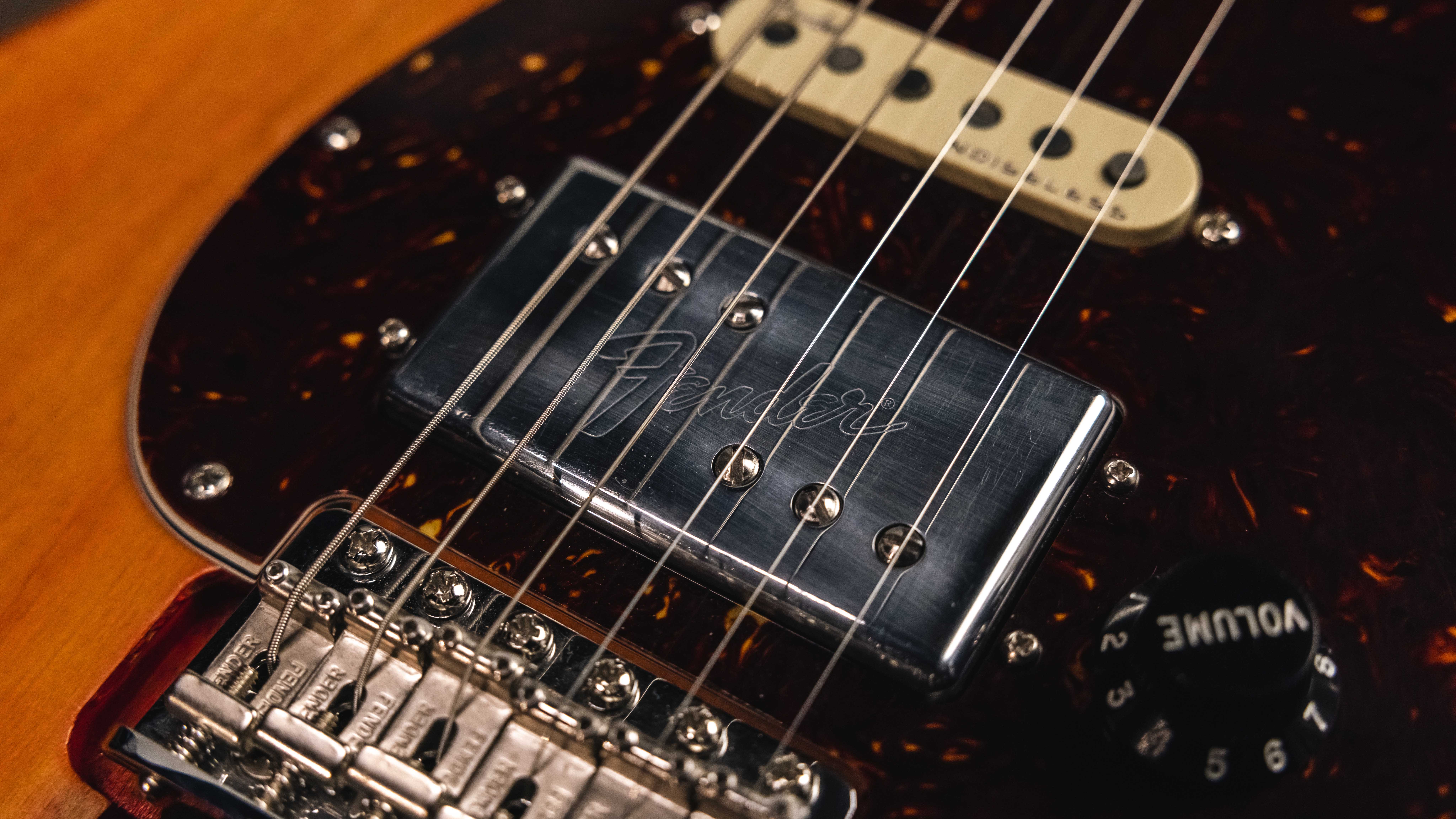
The HSS has always worked best for me because – I think – on a stock Strat, the bridge pickup was always my least favourite
They both feature an HSS pickup configuration. After years of experimentation and session work, what led you to settling on that as your preferred arrangement for this Strat?
"The HSS has always worked best for me because – I think – on a stock Strat, the bridge pickup was always my least favourite. I like a beefier bridge pickup and the Wide Range sits right in the middle of a single coil and a humbucker. It’s maybe not as much mid-range as a humbucker; it’s got a little bit more open brightness. So, that one really matches up nicely with the neck and middle pickups. It’s a perfect match!"
Was the idea of adding that Wide Range humbucker also to afford you increased versatility without having to change guitars during a session?
"Yeah, exactly. It’s really a chameleon and you can get just about every sound out of a Strat. In the ‘80s when everyone was doing that – and Van Halen was the first, I think, to put a humbucker in a Strat – the guitar sounds were kind of heavier back then. Or, there was a lot of that style of distorted guitar on records, so putting a humbucker in was pretty normal back then."
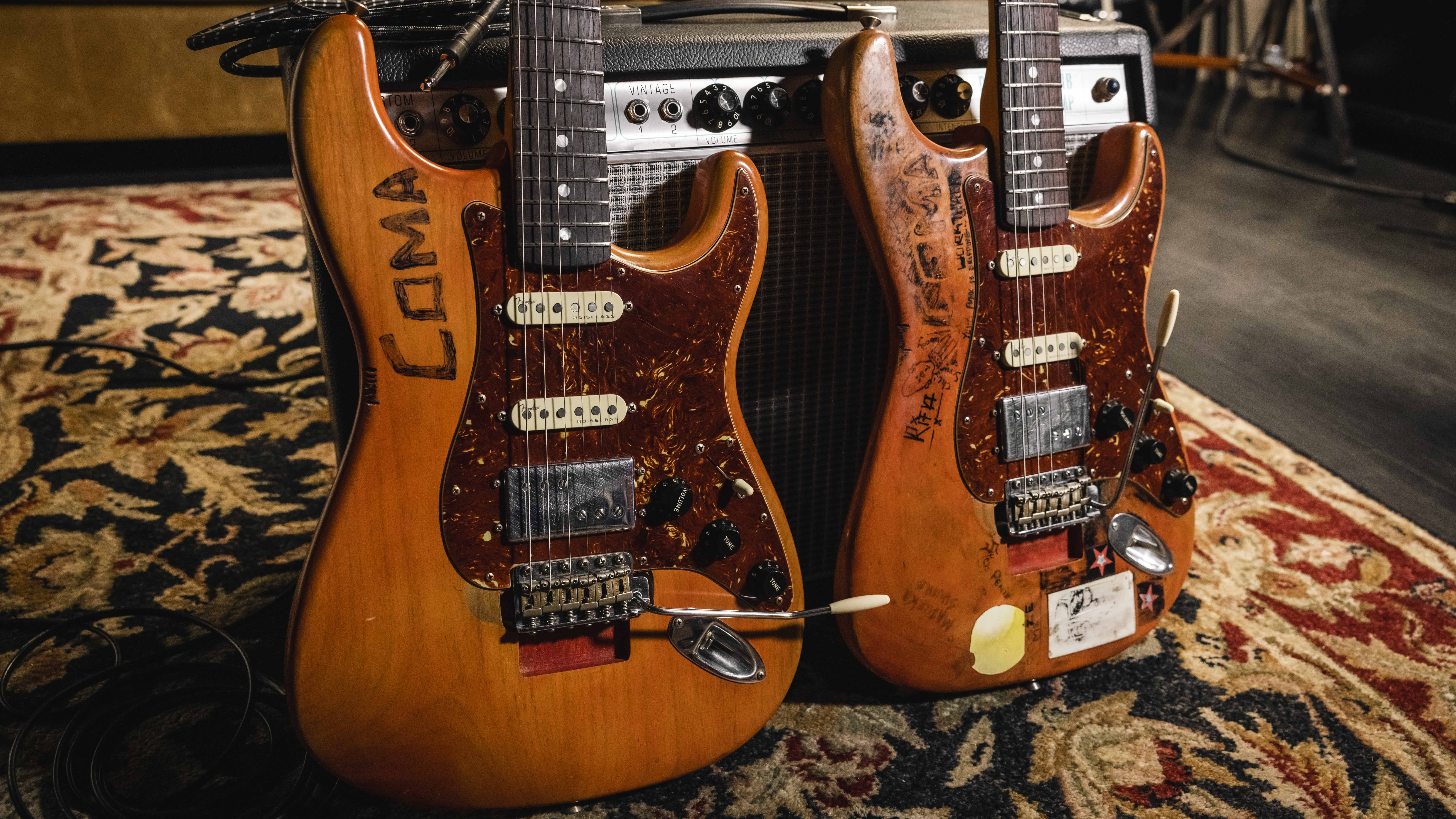
It’s just a really balanced guitar that you can do anything with, and I would encourage people to mod it further if they wanted to!
What aspect of these new Coma Strats are you most proud of and excited to share?
"Well, to me, they’re both just the perfect balance of everything sonically. We reshaped the neck, so it’s just got a perfect neck that I think most people will really like, and it’s lightweight. It’s just a really balanced guitar that you can do anything with, and I would encourage people to mod it further, if they wanted to! You could still put the mid boost in if you wanted because that’s already ready to go.
"It’s just a really balanced guitar and the pickups work really great. These new Noiseless ones are amazing. They sound the closest to me to a single coil that I’ve ever heard, so I’m really proud of those Noiseless pickups."
Does it ever feel a little strange to see someone else holding an instrument that looks so much like your unique and very personal guitar?
"It does, yeah. The Custom Shop one is definitely a replica! Fender also did a 1963 Fiesta Red Strat of mine. That was the first signature guitar, and that one freaked me out the first time I got it because that was only a Custom Shop version. I just couldn’t believe the detail and the relic-ing. Side by side, they were truly identical and that was strange!"
Michal Landau: 5 tips for guitarists
1. Get your gear together before you hit the studio
That’s one of the things I always really paid attention to early on because I just didn’t want to have to deal with the panic of having stuff going wrong on a session
"As far as studio work, I would always say to definitely have your equipment thing worked out before you go into the studio and be confident that it’s [working properly]. You don’t want to be dealing with equipment failures on a session. Then, at that point, you can really just concentrate on playing the music.
"That’s one of the things I always really paid attention to early on because I just didn’t want to have to deal with the panic of having stuff going wrong on a session. So, I would say definitely have that together!"
2. Want a callback? Then be sure to 'play to the song'
"Always play to the song. Play to and respect the vocalist, the song and make it musical. Adding what you can without stepping out too much would be a good way to get called back."
3. Practice with musicality
"The other thing I always tell young guys and girls is that, just when you’re playing around the house – which is where I do most of my playing because I don’t really have a practicing study – even if you’re just playing an A major scale, I would say to always just play it in a musical way.
Mix up the phrasing, mix up the timing and just make it sound musical with everything you play
"Mix up the phrasing, mix up the timing and just make it sound musical with everything you play.
"Eventually, every time you pick up the guitar, it’s going to sound musical. It won’t sound stiff, it won’t sound kind of contrived and it’ll always have a flow to it."
4. Turn down on your guitar
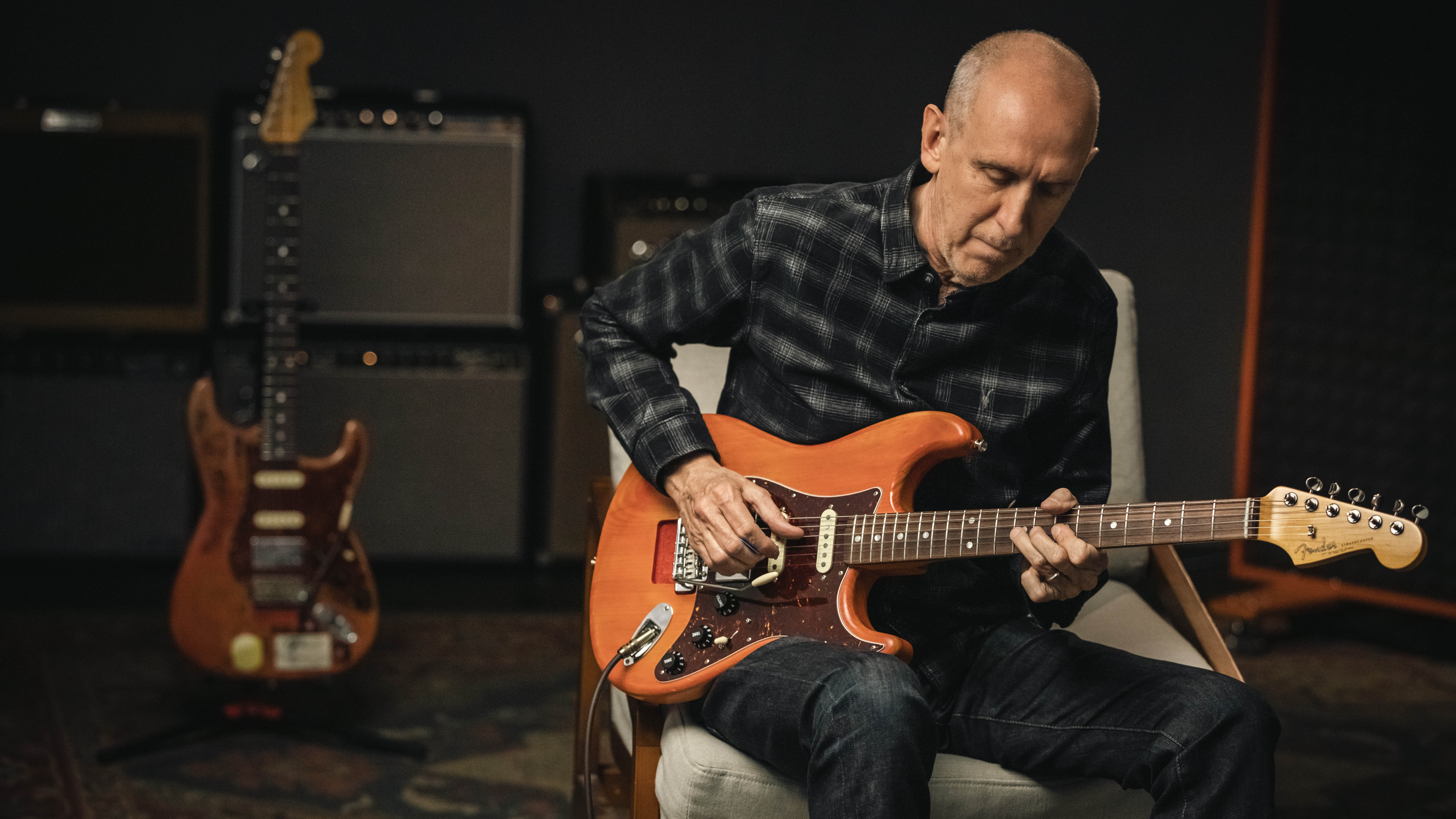
"One of the main things for me is that - because I use pedals - I’ve always had my volume control on the guitar live in the range of, let’s say, five to eight. That, in conjunction with the pedal you’re using, means you can have an infinite degree of dirt.
Oftentimes, when a guitar is in a track, it’s got to be a little bit dirty for it to poke through
"Oftentimes, when a guitar is in a track, it’s got to be a little bit dirty for it to poke through. If you have a real sterile clean sound, it’s going to get lost usually. Those upper harmonics of distortion make it be heard and step out.
"So that’s one of the main things, and if you roll your volume back and still have a pedal on, it’ll buffer it and you’ll still have the high end, and you can decide instantly how much dirt you need to fit in with the track. Obviously there’s the tone controls too. But that would be one of the main things.
"When the guitar is all the way up, that’s a great sound. That’s kind of the best of everything, but then you have to keep fiddling with the amp or the pedals. There’s something about turning the guitar down a little bit – and I’ve read that Jeff Beck did that a lot as well – and having it live in that seven to eight range where it’s just got a sweetness to it and it’s a little bit darker sounding.
"You can really dial in the perfect tone if you turn down a little bit. Your range, all of a sudden, becomes much wider."
5. Put down the router and step away from the vintage guitar…
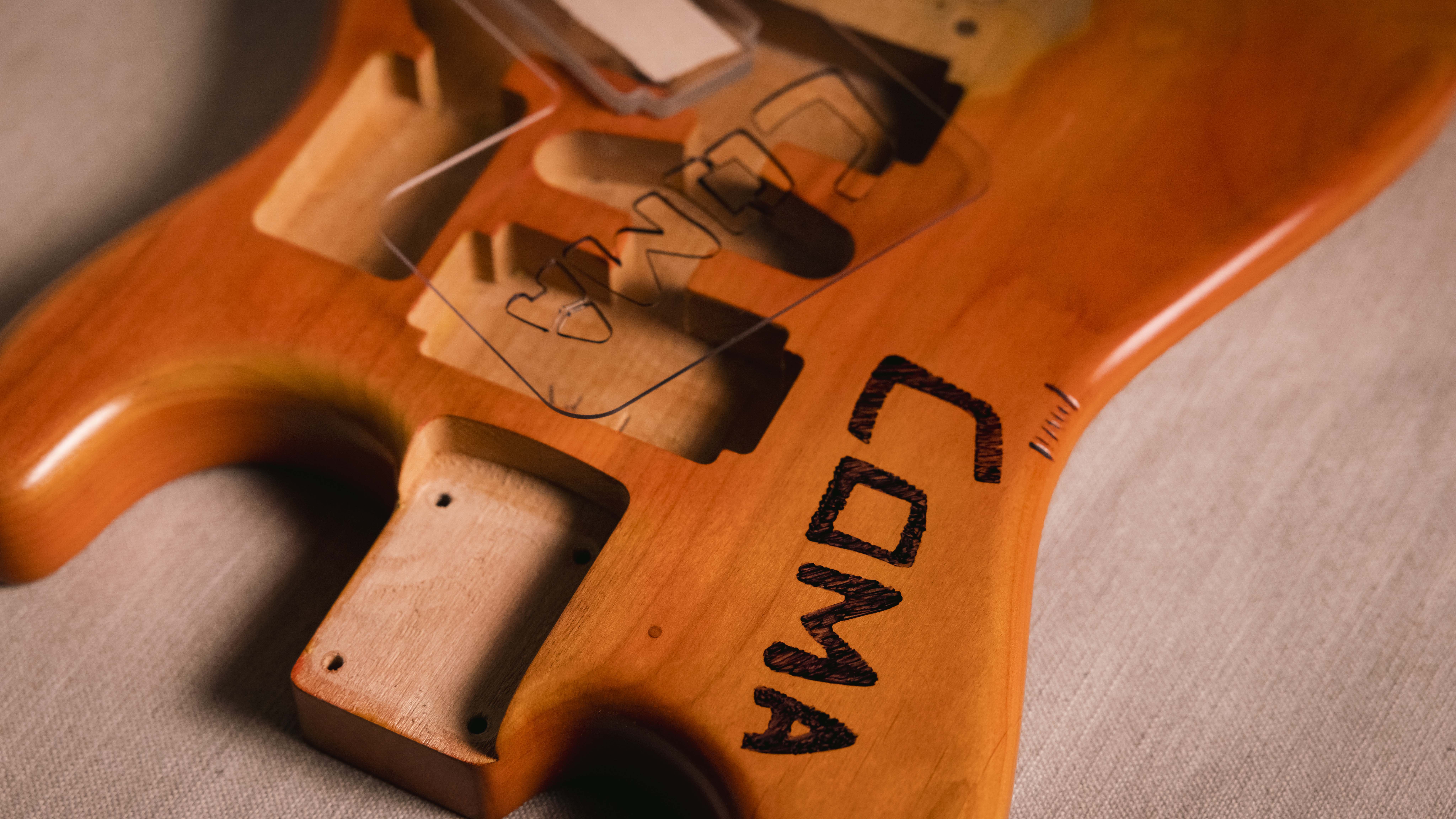
"I’ve kind of slowed down a little bit on modding guitars. I like both: I like modded guitars, but I also like a straight stock guitar from the '60s or '70s as well. There’s something really cool about that as well. I like them all!
"Back in the ‘80s, we would just do it. The vintage guitars weren’t so precious back then. I mean, now, it’s probably okay. I wouldn’t do it to a ‘59 Les Paul, obviously! At this point, there’s not that many of the originals left because they’re in a collector’s collection or whatever.
"So, I’d say now – more than ever – just be more respectful towards vintage instruments. Back then, there were plenty to mess with!
- Find out more about the Fender Michael Landau 'Coma' Stratocasters at Fender
Ellie started dabbling with guitars around the age of seven, then started writing about them roughly two decades later. She has a particular fascination with alternate tunings, is forever hunting for the perfect slide for the smaller-handed guitarist, and derives a sadistic pleasure from bothering her drummer mates with a preference for “f**king wonky” time signatures.
As well as freelancing for MusicRadar, Total Guitar and GuitarWorld.com, she’s an events marketing pro and one of the Directors of a community-owned venue in Bath, UK.
“A fully playable electro-mechanical synth voice that tracks the pitch of your playing in real time”: Gamechanger Audio unveils the Motor Pedal – a real synth pedal with a “multi-modal gas pedal”
“Instead of labouring over a perfect recreation, we decided to make an expanded counterpart”: Chase Bliss teams up with Mike Piera for Analog Man collab based on the legendary King Of Tone
